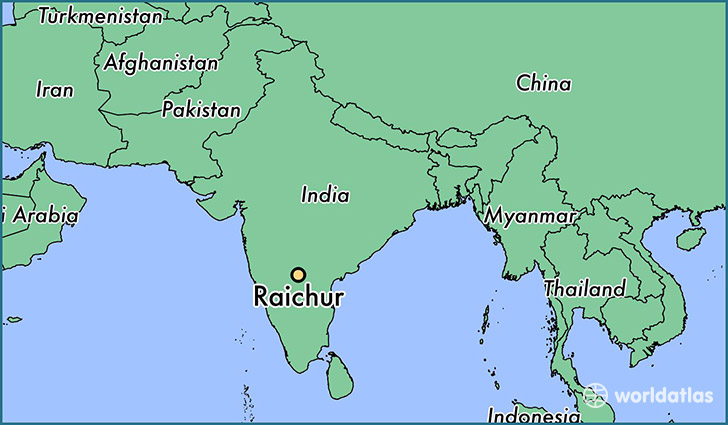
WO2015031595, A PROCESS FOR PREPARATION OF SAXAGLIPTIN AND ITS HYDROCHLORIDE SALT
https://patentscope.wipo.int/search/en/detail.jsf?docId=WO2015031595
AMNEAL PHARMACEUTICALS LLC
KUMAR, Agarwal Virendra; (IN).
BADRULHUSAN, Siddiqui Arif; (IN).
KESHAV, Kataria Lalit; (IN).
SUBODHBHAI, Maheta Abhay; (IN).
CHANGANBHAI, Butani Pankaj; (IN).
PRABHAKARRAO, Patil Shashikant; (IN).
YASHWANT, Patil Tushar; (IN).
SURYAKANT, Deore Ganesh; (IN).
JAHYANTIBHAI, Pansuriya Ketan; (IN).
SURESHBHAI, Patel Hitesh; (IN).
BADHABHAI, Sondharava Lalit; (IN)
Described is an improved and industrially feasible process for the preparation of Saxagliptin or its hydrochloride salt. Also described are the novel intermediates and their use in the preparation of Saxagliptin or its hydrochloride salt.

Dipepeptidyl peptidase IV inhibitors (DPP-IV inhibitors) are a class of oral hypoglycemic agents that block the enzyme DPP-rV and have been used to treat diabetes mellitus type 2. Saxagliptin has the chemical names (llS',3lS,,5lS,)-2-[2(lS,)-2-amino-2-(3-hydroxy-adamantan- l-yl)acetyl]-2-azabicyclo[3.1.0]hexane-3-carbonitrile or (lS,3S,5S)-2-[(2S)-2- 3 7
amino-2-(3-hydroxytricyclo[3.3.1.1 ' ]dec- l-yl)acetyl]-2-azabicyclo[3.1.0]hexane-3-carbonitrile and the structural formula [I] . It is an orally active reversible DPP-IV inhibitor that is the active ingredient in the form of its hydrochloride salt in the ONGLYZA® tablet products originally developed by Bristol-Myers S uibb, and now marketed by AstraZeneca.

Saxagliptin and its hydrochloride and trifluoroacetic acid salts are disclosed in U.S. Patent 6,395,767. U.S. Patent 7,420,079 and U.S. Patent 8,278,462 disclose a process for the preparation of saxagliptin, its hydrochloride salt, trifluoroacetate, and benzoate salts, and saxagliptin monohydrate. U.S. Patent 7,705,033 discloses a process for the preparation of saxagliptin monohydrate. U.S. Patent 7,214,702 discloses a process for the preparation of saxagliptin or its hydrochloride salt.
The above documents disclose a process for the preparation of saxagliptin, which involves condensation of 2-aza-bicyclo[3.1.0]hexane-3-carboxylic acid amide with adamantan-1-yl-tert-butoxycarbonylamino acetic acid.
U.S. Patent 7,186,846 discloses a process for the preparation of saxagliptin which involves reacting 2-aza-bicyclo[3.1.0]hexane-3-carbonitrile with trifhioroacetic acid 3-[carboxy-(2,2,2-trifluoroacetylamino)-methyl]adamantan-l-yl ester, followed by reductive cleavage of protected saxagliptin.
Hiroshi Fukushima et al., "Synthesis and Structure- Activity Relationships of Potent 1- (2-Substituted-aminoacetyl)-4-fluoro-2-cyanopyrrolidine Dipeptidyl Peptidase IV Inhibitors," Chemical and Pharmaceutical Bulletin, Vol. 56(8), pages 1110-1117 (2008), reports the instability of 2-cyanofluoropyrrolidine derivatives at pH 6-8, due to intramolecular cyclization of basic nitrogen to a cyano group, leading to the formation of cyclic amidine which further transforms to diketopiperazine derivatives. Saxagliptin, being a 2-cyanopyrrolidine derivative, may undergo intramolecular cyclization to form a cyclic amidine.
The above reported processes suffer from the drawback that the tert-butyloxy carbonyl ("BOC") group is too sensitive in acidic conditions, which exist during the condensation of 2-aza-bicyclo[3.1.0]hexane-3-carboxylic acid amide with adamantan-l-yl-tert-butoxycarbonylamino acetic acid, which leads to formation of unwanted impurities. Further, deprotection of BOC requires harsh and more acidic conditions. Moreover, using BOC as a protecting group makes the reaction monitoring difficult using thin layer chromatography ("TLC" ) and tedious since it is less sensitive to ultraviolet ("UV"). BOC also is relatively expensive, making the process not viable industrially.
Indian Application 2065/CHE/2012 discloses a process for the preparation of saxagliptin which involves the use of the benzyloxy carbonyl group ("CBZ") for protection of the amino group. However, CBZ deprotection would eventually lead to saxagliptin, which by itself is unstable and prone to intramolecular cyclization. Moreover, CBZ is difficult to handle on an industrial scale because of its liquid state and lacrimating properties.
Scheme-I

In yet another aspect, the present invention provides a process for preparation of saxagliptin hydrochloride as depicted in the scheme-II below.
Scheme-II

Potassium Carbonate

The following examples are provided only for the purpose of illustrating certain specific aspects and embodiments of the present invention and should not be considered as limiting the scope or spirit of the invention in any manner.
Example 1
Preparation of (lS)-a-amino-3-hydroxyadamantane-acetic acid hydrochloride
A solution of (lS)-l-[[(l,l-Dimethylethoxy)carbonyl]amino]-3-hydroxyadamantane-l-acetic acid (1.0 g) in dichloromethane (10 ml) at 10-20°C was mixed with 20-25% isopropanol-HCl (2 ml) and stirred at 25-35°C for 8 hours. Solvent was evaporated from the reaction mixture to give the product (lS)-a-amino-3-hydroxyadamantane-acetic acid hydrochloride as a solid (0.72 g). (Yield: 90.0%)
Example 2
Preparation of (lS)-l-[triphenylmethyl amino]-3-hydroxyadamantane-l-acetic acid
A solution of (lS)-a-amino-3-hydroxyadamantane-acetic acid (1.0 g) in dichloromethane (10 ml) at 15-25°C was mixed with triethylamine (1.18 ml) and triphenylmethyl chloride (1.2 g). The reaction mixture was stirred at 25-35°C for 4 hours. Solvent was evaporated from the reaction mixture to give the product (lS)-l-[triphenylmethyl amino] -3-hydroxyadamantane-l-acetic acid (1.24 g). (Yield: 70.0%)
Example 3
Preparation of methanesulfonic acid salt of (lS,3S,5S)-2-azabicyclo[3.1.0]hexane-3-carboxamide
Tert-butyl (lS,3S,5S)-3-carbamoyl-2-azabicyclo[3.1.0]hexane-2-carboxylate (100 g, 0.442 mole) was combined with isopropyl alcohol (600 ml), with stirring at 25-30°C. The mixture was heated to 60-70°C and methanesulfonic acid (55.2 g, 0.575 mole) was added in small amounts over 60 minutes. The mixture was stirred for 4 hours at 60-70°C. Completion of the reaction was confirmed using TLC. The mixture was cooled to 5-15°C and stirred for 1 hour.
The mixture was filtered and the solid was washed with chilled isopropyl alcohol (2x50 ml). The filtrate was dried under vacuum to obtain the methanesulfonic acid salt of (lS,3S,5S)-2-azabicyclo[3.1.0]hexane-3-carboxamide. (Yield=96.7%; HPLC purity= 96%)
Mass: 434 [M+H]+
1H-NMR (CDCI3) δ: 6.96 (1 H, s), 5.68 (1 H, s), 5.39-5.42 (1 H, d), 4.88-4.91 (1 H, dd), 4.52-4.54 (1 H, d), 3.67-3.70 (1 H, m), 2.50-2.53 (1 H, dd), 2.22 (2 H, s), 2.03 (1 H, s), 1.47-1.75 (15 H, m), 1.41 (9 H, s), 1.24 (1 H, s), 0.81-0.95 (2 H, m)
Example 4
Preparation of (lS,3S,5S)-2-[(2S)-2-triphenylmethylamino-2-(3-hydroxyadamantan-l-yl)acetyl]-2-azabicyclo[3.1.0]hexane-3-carboxamide
A solution of (lS)-l-[triphenylmethyl amino] -3-hydroxyadamantane-l -acetic acid (1.0 g), (1S,3S, 5S)-2-azabicyclo [3.1.0]-hexane-3-carboxamide methanesulphonate (0.47 g), 1-hydroxybenzotriazole monohydrate (HOBt»H20) (0.08 g), dichloromethane (5 ml), and triethyl amine (0.4 ml) at 5-15°C was combined with triethylamine (0.65 ml) and l-ethyl-3-(3-dimethylaminopropyl) carbodiimide hydrochloride (EDC.HC1) (0.5 g) and stirred at ambient temperature (25-35°C) for 12 hours. Completion of the reaction was verified using TLC. The reaction mixture was successively washed with water (5 ml), IN HC1 (5 ml), 5% aqueous sodium bicarbonate solution (3x5 ml), and then with brine (5 ml). The solvent from the organic phase was evaporated to give a residue. To the residue was added toluene (5 ml) and water (5 ml) and the mixture was heated to 45-55°C and maintained for 1 hour. The mixture was cooled to 25°C, stirred for 2 hours and filtered. The solid was washed with toluene (2 ml) and dried at 50-60°C in an oven to give the title compound (0.984 g). (Yield: 80.0%)
Example 5
Preparation of (lS,3S,5S)-2-[(2S)-2-(tritylamino)-2-(3-hydroxyadamantan-l-yl)acetyl]-2-azabicyclo[3.1.0]hexane-3-carboxamide
l-Ethyl-3-(3-dimethylaminopropyl) carbodiimide hydrochloride (EDC.HC1) (1.2 eq., 12.3 g) was added in portions to a solution of 3-hydroxyadamantane-l-yl (lS)-tritylamino-acetic acid
(25.0 g) in tetrahydrofuran (175 ml) and stirred for 15 minutes. 1 -Hydroxybenzotriazole monohydrate (HOBt»H20) (1.0 eq., 8.2 g) and (1S,3S, 5S)-2-azabicyclo [3.1.0]-hexane-3-carboxamide methanesulphonate (1.0 eq., 11.88 g) were added to the mixture in portions.
Triethyl amine (3.2 eq., 17.28 g) was added dropwise to the reaction mixture over 20 minutes. The reaction mixture was stirred at 25°C for 5 hours. Completion of the reaction was verified using TLC. The solvent was distilled from the reaction mixture to give a residue.
Dichloromethane (250 ml) and water (100 ml) were mixed with the residue and the organic
phase was separated. The organic phase was washed with aqueous dilute HC1 (100 ml), aqueous 10% sodium bicarbonate solution (100 ml), and then with brine (100 ml). The organic phase was dried over sodium sulfate and the solvent evaporated to give a residue, which was dried under high vacuum at 30-40°C for 2 hours to obtain (lS,3S,5S)-2-[(2S)-2-(tritylamino)-2-(3-hydroxyadamantan-l-yl)acetyl]-2-azabicyclo[3.1.0]hexane-3-carboxamide (18.0 g). (Yield: 59%)
Example 6
Preparation of (lS,3S,5S)-2-[(2S)-2-tritylamino-2-(3-hydroxyadamantan-l-yl)acetyl]-2-azabicyclo[3.1.0]hexane-3-carboxamide
Tert-butoxycarbonylamino-(3-hydroxy-adamantan-l-yl)-acetic acid (100 g; 0.307 mole) was added to dichloromethane (500 ml) with stirring. The methanesulfonic acid salt of (1S,3S,5S)-2-azabicyclo[3.1.0]hexane-3-carboxamide (64.8 g; 0.292 mole) was added, and the reaction mixture was stirred for 15 minutes at 25-35°C. In a separate flask, 1-hydroxybenzotriazole monohydrate (11.8 g; 0.077 mole) and triethylamine (34.2 g) were added to dichloromethane (500 ml) and stirred to form a solution. This solution was added to the reaction mixture gradually over 30 minutes at 25-30°C. The reaction mixture was then cooled to 5-15°C, 1-ethyl-3-(3-dimethylaminopropyl)carbodiimide hydrochloride (EDC.HC1) (70.6 g) was added, and the mixture was stirred for 15 minutes at 5-15°C. Triethylamine (65.2 g) was added to the reaction mixture and stirred for 30 minutes. Temperature of the reaction mixture was raised to 25-35°C and stirred continuously for 12 hours. Reaction completion was confirmed by HPLC. Water (500 ml) was added, the mixture was stirred, and the organic layer was separated. The organic layer was washed with dilute hydrochloric acid solution (500 ml, prepared by adding concentrated hydrochloric acid (60 ml) to water (440 ml)), and further washed with sodium bicarbonate solution (3 times), followed by washing with sodium chloride solution. Hydrogen chloride in isopropanol (14.2% w/w, 315.6 g) was added over 60 minutes, and the mixture was stirred for 4 hours. Completion of the reaction was confirmed by HPLC. The mixture was distilled under vacuum to remove dichloromethane. Toluene was added to the residue and distilled under vacuum. Acetonitrile (400 ml) was added to the residue followed by addition of triethylamine (79.2 g) over 15 minutes with stirring. The reaction mixture was cooled to 10-20°C, and trityl chloride (72.7 g) was added gradually, followed by stirring for 2 hours. Completion of the reaction was confirmed by HPLC. The mixture was distilled under vacuum to remove acetonitrile. Toluene was added to the residue and distilled under vacuum. Toluene (500 ml) followed by water (500 ml) were added to the residue, the mixture was heated at 45-55°C and filtered and dried to obtain the product. (Yield=60.3%; HPLC purity=94%)
Mass: 576 [M+H]+
1H-NMR (CD3OD) δ: 7.43-7.45 (5 H, d), 7.06-7.17 (10 H, m), 4.50 (1 H, s), 3.84-3.87 (1 H, dd), 3.42 (1 H, s), 3.09-3.13 (1 H, m), 2.87-2.91 (1 H, m), 2.15-2.23 (1 H, m), 2.09 (1 H, s), 1.90-1.92 (1 H, d), 1.42-1.77 (13 H, m), 1.19-1.22 (1 H, t), 0.72-0.76 (1 H, m), 0.50-0.55 (1H, m)
Example 7
Preparation of (lS,3S,5S)-2-[(2S)-2-tritylamino-2-(3-hydroxyadamantan-l-yl)acetyl]-2-azabicyclo[3.1.0]hexane-3-carbonitrile
A solution of (lS,3S,5S)-2-[(2S)-2-tritylamino-2-(3-hydroxyadamantan-l-yl)acetyl]-2-azabicyclo[3.1.0]hexane-3-carboxamide (15.0 g) in tetrahydrofuran (150 ml) was mixed with pyridine (12.3 g) and cooled to 0-10°C. Trifluoroacetic anhydride (19.1 g) was added to the reaction mixture slowly over 30 minutes. The reaction mixture was stirred at 0-10°C for 3 hours. Completion of the reaction was confirmed by HPLC. Aqueous potassium carbonate solution (20%, 240 ml) was added to the reaction mixture over 30 minutes to obtain pH 10-11. Methanol (50 ml) was added, and the reaction mixture was stirred at 25°C for 3 hours. Completion of the reaction was verified using TLC. The reaction mixture was cooled to 0°C and stirred for 30 minutes. The solid was filtered and washed with water (2x15 ml). The solid was dried under vacuum at 50-60°C for 8 hours to give the title compound (10.0 g). (Yield=79%; HPLC purity=99%)
Mass: 558 [M+H]+
1H-NMR (DMSO d6) δ: 7.47-7.49 (6 H, d), 7.24-7.28 (6 H, t), 7.16-7.19 (3 H, t), 4.46 (1 H, s), 4.05-4.08 (1 H, dd), 3.10-3.13 (1 H, m), 2.95-2.98 (1 H, d), 2.20-2.26 (1 H, m), 2.12-2.18 (2 H, m), 1.88-1.95 (3 H, m), 1.38-1.75 (1 H, m), 0.75-0.80 (1 H, q), 0.42-0.46 (1 H, m)
Example 8
Preparation of saxagliptin hydrochloride
A mixture of aqueous hydrochloric acid (34.5% w/w) (2.3 g) and methanol (20 ml) was added to a mixture of (lS,3S,5S)-2-[(2S)-2-tritylamino-2-(3-hydroxyadamantan-l-yl)acetyl]-2-
azabicyclo[3.1.0]hexane-3-carbonitrile (10.0 g) in methanol (80 ml), and the mass was stirred at 25°C for 3 hours. Completion of the reaction was verified by HPLC. Solvent was distilled from the reaction mixture to give a residue. Ethyl acetate (100 ml) was mixed with the residue for 30 minutes at ambient temperature. The solid was filtered and washed with ethyl acetate (2x5 ml). The solid was dried under vacuum at 50-60°C for 8 hours to give the title product (6.0 g). (Yield=90 ; HPLC purity=99.5 )
Mass: 316 [M+H]+
1H-NMR (DMSO d6) δ: 8.29 (3 H, s), 5.21-5.24 (1 H, dd), 4.63 (1 H, s), 4.23 (1 H, s), 4.09-4.12 (1 H, m), 2.54-2.57 (1 H, m), 2.23-2.27 (1 H, dd), 2.15 (1 H, s), 1.93-1.98 (1 H, m), 1.40-1.67 (12 H, m), 1.00-1.05 (1 H, m), 0.73-0.77 (1 H, m)


Amneal Pharmaceuticals' co-CEO Chirag Patel to be honored by the New Jersey City University Foundation - Community - The American Bazaar

Chirag Patel (c), president of Bridgewater, N.J.-based Amneal Pharmaceuticals.
///
Chirag Patel (c), president of Bridgewater, N.J.-based Amneal Pharmaceuticals.


 Omarigliptin , MK-3102
Omarigliptin , MK-3102




































